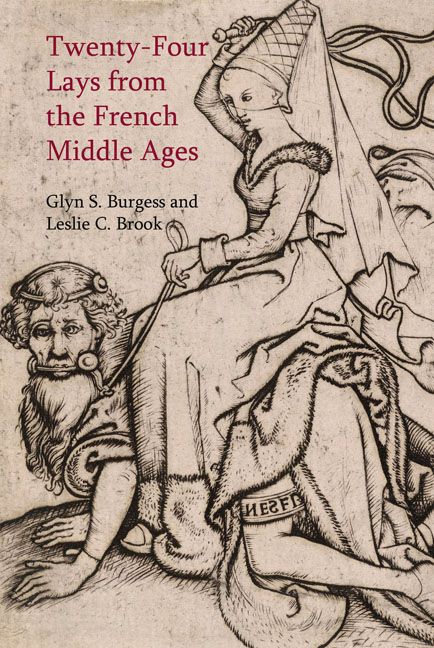21 - The Lai de l'Ombre
from Romance and Realism
Summary
Introduction
The Lai de l'Ombre (Lay of the Reflection) is preserved in seven manuscripts: (i) S; (ii) A: Paris, BNF, fr. 837; (iii) B: BNF, fr. 1593; (iv) C: BNF, fr. 12603; (v) D: BNF, fr. 19152; (vi) F: BNF, fr. 14971; (vii) G: BNF, fr. 1553. Our translation is based on the edition of S by Alan Hindley and Brian J. Levy (their E). The author names himself in the epilogue as Jehan Renart (v. 953), who is also known as the author of the Roman de l'Escoufle (which Jehan mentions in the Lai de l'Ombre, vv. 22–23) and the Roman de la rose ou de Guillaume de Dole. Other texts, such as Galeran de Bretagne and the fabliau Auberee, have also been attributed to him.
A philandering knight is assailed by the goddess of Love because he has hitherto shown her insufficient homage. She has decided to make him feel her power and strength and to inflict worse anguish upon him even than experienced by the famous lover Tristan. Love implants in the knight's heart the name and beauty of a certain lady and he has no option but to go and visit her. Much of the interest in the tale lies in the couple's verbal jousting. Despite his protestations of love and his skilful use of the language of seduction, the knight makes little progress until he sheds tears. Shortly afterwards, he slips his ring on to her finger and then distracts her attention, so that he can ride off before she notices it. When lady does notice it, she calls him back to explain himself and to make him take back the ring. For if she kept it he would be able to call himself her lover. Although these are important stages in his quest for her love, victory is only achieved when he sits beside the lady on the edge of a well. He agrees to take back the ring, but only if he can dispose of it as he wishes and give it to his second-best girl. Intrigued by this, she returns the ring to him and he drops it on to the lady's reflection in the well.
- Type
- Chapter
- Information
- Twenty-Four Lays from the French Middle Ages , pp. 227 - 243Publisher: Liverpool University PressPrint publication year: 2016



